- Register
- Log in to Tune-In
- Wishlist (0)
-
Shopping cart
(0)
You have no items in your shopping cart.
Beatles News

A movie chronicling the story of a man is every feminist’s dream come true. Ironic? Maybe. But the filmmakers behind the upcoming The Lennon Report had me falling in love with something I haven’t even seen yet, purely because of their conscience efforts to give women equal opportunity and allow them to shine with this project. Bustle caught wind of the film at the 2016 MTV Movie Awards and spoke with producers/brothers Rafael and Gabriel Francisco and star Stef Dawson about how they turn the story of an iconic man’s death into one which shares the spotlight with women — on and off screen — who are incredibly deserving of it.
First off, know that about 70% of the movie’s department heads was made up of women. “Having women work on a film, we’re never very conscience about it, it should just always be a regular thing,” says Rafael Francisco. “Women are just as qualified as men and that should never be a question. If everybody hired based on qualifications, it would be even everyday.” He explains how beneficial it is having women as such a strong part of a team’s backbone: “We have always hired women and men, we’ve never sort of [said], &ls details
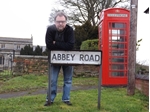
Music fans have been known to do some pretty strange things over the years. For some people, the traditional acts of appreciation—buying records, going to gigs, sending the occasional item of underwear in the mail—simply aren’t enough. For some, devotion means more.
Consider the California woman who had a tattoo of Drake’s name branded onto her forehead; or the German dude who spent $60,000 on plastic surgery to look like Justin Bieber; or the man who regrettably covered his body in 29 Miley Cyrus tattoos. These are the fans whose rock ‘n’ roll reverence knows no sensible bounds.
Bryan Eccleshall might not quite be at the top of this list. But, undoubtedly, he’s somewhere on it. Over eight years, this Beatles-lover has travelled the length and breadth of his home country of England in an attempt to visit and take a photo of every single Abbey Road—the title of the Fab Four’s 11th album. He did it, too. Some 132 of them in total. Thousands of miles travelled, and many more dollars spent. “It wasn’t purely a fan-boy thing, though,” the 50-year-old tells Noisey when we meet for a pint in his home city of Sheffield, UK. “It was a conceptua details

Stuart died this day in 1962.
This article is from 2011....
What Stuart Sutcliffe fan hasn’t wished to learn as much as possible about the fascinating young artist and Beatle? His time with us was short yet incredibly creative; every surfacing artwork, picture, letter or anecdote is pored over with relish by admirers. But some things Sutcliffe-lovers were sadly certain they would never get to know: for instance—his voice.
That’s why the digital release of “Love Me Tender“, sung by Stuart himself, is an astonishing event generating stunned excitement and questions about the song’s origin and authenticity.
“Love Me Tender” was Stuart’s signature song; a ballad he performed so well in Hamburg it received the best applause during the Beatles’ sets at the Kaiserkeller and Star Club. Sutcliffe also performed Carl Perkins’ “Matchbox” and Elvis Presley’s “Wooden Heart”. But “Love Me Tender” is the song most associated with his name.
His newly-released song, now available to the public for the first time in 50 years, is compelling listening: Stu’s voice strains just slightly ending the details

Rock groups had split before, and no one bar their fans really cared. But the parting of the Beatles? This was the first time four musicians deciding to work separately became worldwide news, treated almost as a death.
The end itself, though, was distinctly anticlimactic. George Harrison was actually the first of the Fab Four to walk, back in 1968. He was coaxed back into the fold, only for John Lennon to quit in the autumn of 1969. A pact of stony silence in the face of the public was agreed, allowing for the release of the Beatles' Abbey Road album in September 1969 and the continuation of other works in progress. The four individual Beatles drifted yet further apart, with an increasingly estranged McCartney retreating as far as rural Scotland.
The White Album, released in November 1968, had already felt like the work of four distinct creatives, rather than the world's most unassailable musical force. The gold-plated songwriting partnership of Lennon/McCartney had become unworkable, as the influence of new romantic partners, inchoate business affairs, power struggles and the turn of the decade all came to bear on a Liverpudlian quartet who had turned rock music from a frivolous teenage pursuit into serious cul details
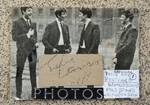
A Beatles fanatic who was good friends with the group has got his hands back on a historic amplifier almost certainly used by the band.
Halewood man Stan Cargill has spent years collecting Beatles memorabilia and owns hundreds of autographs - some worth thousands of pounds - as well as original photos of the band. And now he is the proud owner of a 55-year-old Vox AC30 amp which had been donated to The Beatles Story more than five years ago. The amp was found by one of Stan’s relatives in 2009 in a shed a few streets away from George Harrison’s old home in Woolton. Stan then got in touch with Sam Leach, who promoted the band in the early 60s, and said he had “no doubt” it was used by the Fab Four.
But now the former promoter has given it back to Stan, who also owns a Sennheiser microphone from the same period which he believes was used by John Lennon and Paul McCartney. He told the ECHO he is considering selling some of his signed photographs and cuttings. He said: “I’ll be very sad to sell some of them, they are treasures. “The Beatles were all brilliant, they were my heroes and I have met them all too many times to count. I used to live just up the road from Harrison, details
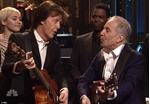
I’ve loved Paul since before I was born.
It really feels that way.
The world I came into was already reaching the fevered height of Beatlemania, with the folk-rock revolution not far behind. I was 5 days old on Aug. 15, 1965 and living in New York City when the Fab Four played their legendary Shea Stadium concert just across town. I was 2 when the movie “The Graduate” made “Sounds of Silence” and “Mrs. Robinson” the sad soundtrack of innocence crashing into experience.
Music mattered in our home. Dad loved classical and ragtime, but he also bought “Sgt. Pepper” and “Bookends” because he knew something important was up. My big brother was — and still is — a hairy singer-songwriter who worshipped Paul (and Bob and Joan; and Joni and Janis; and David, Stephen and Graham). I’m a musician, too, and I absorbed his worship deeply, perhaps as only a younger sibling can.
But I missed the Magical Mystery Tour by a generation. Paul’s partnership split in 1970, so that part of his story has always been history to me. My passion for Paul was embarrassingly passe in my early teens, just when such loyalties really matter t details
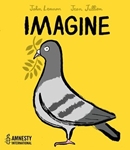
He’s one of the most famous songwriters ever, and now the music legend, peace campaigner and fan of very round glasses, John Lennon has had another role added to his already astonishing list of achievements: picture book author.
Human rights charity Amnesty International is pairing the lyrics of John Lennon with the work of award-winning illustrator and artist, Jean Jullien, to create an illustrated version of Lennon’s iconic song, Imagine.
The picture book aims to share more information about the work that Amnesty International do around the world, as well as raising money for the charity. For every copy sold, a donation will be made to Amnesty International.
Originally written by John Lennon in 1971, the song Imagine sets out Lennon’s dream of a peaceful world, where there is no war or suffering. Lennon was a passionate campaigner for peace, alongside his wife and fellow musician, Yoko Ono.
Amnesty’s new book takes takes Lennon’s lyrics and pairs them with Jean Jullien’s illustrated tale of a young pigeon’s mission to spread peace to all birds. This isn’t the first time Jullien has leant his pen to humanitarian causes – he is the illustrator details

“You swine! You swine! How dare you do that to a Rolls-Royce!”
Imagine John Lennon telling the story over a cup of tea, eyes glinting in quiet amusement behind those round-rimmed glasses. The tale of the woman who attacked him with an umbrella, provoked into berserker fury by the psychedelic Romany paintwork of his big yellow Rolls-Royce. Was it true? Maybe, maybe not.
As for the Rolls-Royce, it’s as solidly real as they come – 2,500 kilograms of a Liverpudlian’s Brobdingnagian folly. It sits in the foyer of Victoria’s Royal B.C. Museum, drawing eyeballs like it has its own gravity well, an icon of British nobility turned on its head. In the mid-1960s, this car was right in the heart of Beatlemania – so how did it end up in a museum on the Canadian West Coast?
You can blame Ringo Starr for the paint job. According to Lennon’s former chauffeur Les Anthony, the idea of painting the Rolls like a Romany caravan came from the Beatles’ drummer as they passed a fairground. Soon, respectable Rolls-Royce black was replaced by a yellow background with floral flourishes and a zodiac symbol atop the roof. Lennon would give back his MBE in 1969, and the yellow Rol details
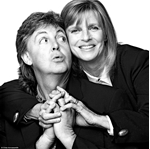
Candid images of Sir Paul McCartney and his late wife Linda may never have seen the light of day if photographer Clive Arrowsmith had not cleared out his attic.
The playful shots were found in the loft of the celebrated fashion and celebrity snapper, taken in impromptu sessions at the end of two official photoshoots in 1976 and 1993 - the first of which featured McCartney's band Wings, which he formed with Linda.
Arrowsmith revealed that Paul asked the stylist to get some 'fun costumes' for a spontaneous shoot, and judging from the results the party enjoyed their dressing up session, with Linda even donning a fake beard.
In one of the more recent portraits, the strong bond between the couple is evident as they pose cheek to cheek. Paul pouts lovingly at his wife as they clasp hands, their wedding bands clearly visible. Similarly a colour shot from the same day shows Linda leaning companionably on Paul's shoulder.
Another more playful pose from 17 years earlier sees the pair in jaunty costumes. Linda looks edgy in a top hat while Paul salutes the camera wearing a beret and clasping a cane to his chest.
The Beatle's famous Liverpudlian sense of humour is again apparent in a photograph details

It was around this time half a century ago that people began to suspect the Beatles of being the creation of supernatural forces. Had they signed a pact with Lucifer? The “more popular than Jesus” frenzy that led to the burning of their records in crazy America demonstrated that, yes, they were unthinkably, absurdly big. The “Paul McCartney is dead” madness caught fire for the same reason. Nothing less than mysterious death or divinity could explain the phenomenon; the resulting paranoia of disbelief had reached the “who really wrote Shakespeare?” level. All this cosmic commotion and they had yet to astonish the world with albums like Revolver and Sgt. Pepper and singles like “Strawberry Fields Forever,” “Penny Lane,” “I am the Walrus,” and “Hey Jude.”
“Tomorrow Never Knows”
Fifty years ago today, April 6, 1966, when the Beatles began recording Revolver in EMI’s Studio Three at Abbey Road, a tall, elegantly handsome gentleman with no evident resemblance to Mephistopheles, and no pact signed in blood in his pocket, guided John Lennon, Paul McCartney, George Harrison, and Ringo Starr to the top of Mt. Revolver. Th details
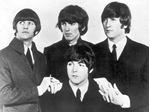
They became the most famous group in pop music history.
But were you aware that John Lennon, Paul McCartney and George Harrison – minus Ringo Starr – once toured the north east of Scotland as a backing group and were called The Silver Beetles?
Or that, during their visit, McCartney was known as Paul Ramon and Lennon had the words Long John appended to his name?
This was long before the days of the Fab Four, George Martin, and Sergeant Pepper.
Instead, in the spring of 1960, the three youngsters backed singer Johnny Gentle on a series of gigs in Inverness, Fraserburgh, Keith, Forres, Nairn and Peterhead. The gigs were staged at such venues as the Northern Meeting Ballroom in Inverness, Dalrymple Hall in Fraserburgh and The Rescue Hall in Peterhead, between May 20 and May 28.Some of the concerts were well-attended, others attracted barely any audience at all. And Lennon and McCartney returned home to Liverpool after losing money on the trip.
Author Richard Houghton, who has been working on a book about The Beatles in Scotland, admits it was a strange start to the group’s career. But he is keen to hear from anybody in the region who might have attended these 1960 gigs.
details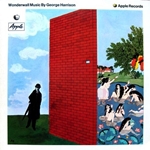
George Harrison’s exotic soundtrack to Joe Massot’s swinging 60s cinematic head trip Wonderwall was the first solo Beatle project (that is if you don’t count Paul McCartney’s 1966 soundtrack to The Family Way, which was credited to The George Martin Orchestra). 1968’s Wonderwall Music is all over the musical map—delightfully so—with songs ranging from classical Indian ragas to jaunty nostalgic-sounding numbers to proto-metal guitar freakouts. It’s a minor classic, I wish more people knew about it. I’ve long been an enthusiastic evangelist for this album, sticking tracks on mixed CDs and tapes for quite some time. Even avowed Beatlemaniacs tend to have missed out on Wonderwall Music. It’s a real overlooked gem.
Harrison’s principle collaborator for the Wonderwall soundtrack was orchestral arranger John Barham who transcribed Harrison’s “western” melodies into a musical annotation that the Indian musicians in Bombay could work with. Barham was a student—and collaborator—of Indian sitarist Ravi Shankar who had introduced him to the quiet Beatle. Barham—who would soon go on to compose the soundtrack to Alejandro Jodorowsky& details

During production on Disney's 1967 animated adaptation of Rudyard Kipling's The Jungle Book, filmmakers came up with a rather ingenious cameo suited to the world's biggest band; the one, and only, The Beatles.
John Lennon, Paul McCartney, George Harrison, and Ringo Starr would voice a quartet of vultures fitted with mop top hairstyles, crooning the charming number, "That's What Friends Are For". Except, those plans appear not to have come to fruition; due either to clashing schedules or, as rumours have it, Lennon's own refusal to partake in the gag.
Supposedly, Lennon vetoed the appearance and retorted to band manager Brian Epstein that he should tell Disney they'd be better off hiring Elvis Presley instead. The final film instead features the vultures in mock-Liverpudlian accents, voiced by J. Pat O'Malley, Digby Wolfe, Lord Tim Hudson, and Chat Stuart; with the more Beatles-influenced number reshaped into a timeless barbershop quartet.
Now, it looks as if Jon Favreau attempted to reclaim such a missed opportunity; and was once more met with a closed door. The director of the newest version of The Jungle Book claims he tried to get McCartney and Starr to cameo as the vultures, but wasn't able to secure details

The fifth instalment of Pirates of the Caribbean has made a major casting addition with Sir Paul McCartney joining the company of Johnny Depp, Orlando Bloom, and Geoffrey Rush.
According to Deadline, the legendary 73-year-old, a former member of the The Beatles, has signed on to play an unnamed character in a major extra scene being added to Pirates of the Caribbean: Dead Men Tell No Tales.
The production of this extra scene, which features McCartney, began in Vancouver on March 24 and is scheduled to continue until April 13. There have already been public sightings of both McCartney and Depp, who was seen with his wife Amber Heard dining at Tojo’s Restaurant on Thursday night.
Although McCartney’s music has appeared in many films and television shows over the decades, this will be his biggest role yet in cinema.
But this is not the first time that the film’s producers tapped the talent of an English musician for a major acting role. In the third and fourth instalments, released in 2007 and 2011, Keith Richards of The Rolling Stones played Captain Edward Teague – the father of Depp’s character, Captain Jack Sparrow.
McCartney’s role in the filming is ex details

Nearly three months after David Bowie died from cancer on January 10, an impressive roster of musicians put on two tribute concerts at New York’s Carneige Hall Thursday and Friday nights. Although the first show had been planned since October, interest spiked after Bowie’s unexpected passing and a second date was added. As Time reported, many of the performers took time to share their reflections on Bowie as a musical influence and personal friend.
Among those was Sean Lennon, whose father John Lennon was an idol of Bowie’s. The men were friends and had a working relationship in the 1970s. As Sean recalled, Bowie was an early personal and musical influence. The multi-faceted performer took time to give him reading material when he was a youngster.
“[T]he real relationship I had with him was personal, because he was my parents’ friend. When I moved to Switzerland for boarding school, he would pick me up from school and take me to museums and tell me about Kokoschka and painters and books. He gave me the ‘Foundation’ trilogy by Isaac Asimov when I was a kid.”
“I’m really sad about him passing, as one would be about an uncle or something, but then details
